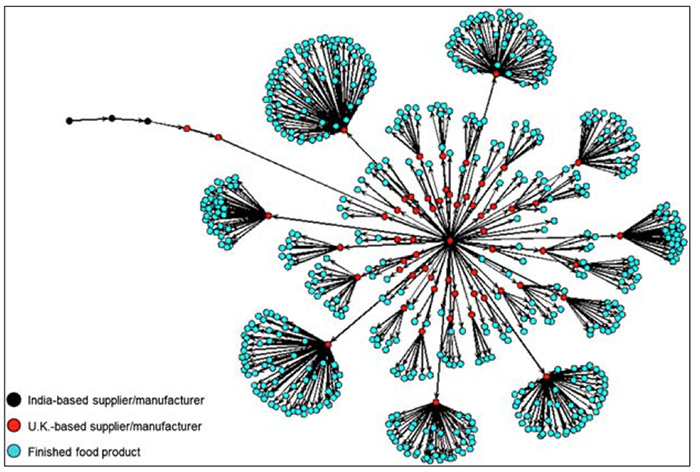COVID-19 has had a major impact on the food and beverage industry this year, contributing to everything from bare shelves and supply chain issues to changes in consumer behavior to plant shutdowns, and to historic grocery cost spikes. We continue to experience changes every day, along with challenges that must be overcome. Lessons from the last year can prepare us for the years ahead, but only if we learn to adapt and anticipate.
Nearly all parts of the supply chain have been impacted, from raw material sourcing and packaging shortages to manufacturing plant shutdowns to logistics capacity to bricks and mortar store operations to consumers. At the onset of the pandemic, major industry trade shows were cancelled and postponed, along with demos and in-person sales meetings, leaving the future of shelf resets with a dark cloud hanging above them. Staying in touch virtually with buyers and providing updates proved to be a best practice and will continue into 2021.
To keep things running smoothly on the manufacturing side, assets from some logistics providers were redeployed to where they were needed most, and with consumers dining more from home, the industry saw a huge move from food service to retail, which we will touch on a bit later. Moving into 2021, brands should ensure their raw materials and supply inventories, especially those that are imported, can cover any potential and unforeseen disruptions. It is critical to prepare well in advance of shortages or surges, specifically in at-risk chains.
Despite the attempts to mitigate against shortages, even the most well-known brands faced major out-of-stock issues and consumers turned to alternative, smaller brands. The shortages came from an increase in pressure from consumers stocking up on items, not from a lack of supply as many believed. Manufacturers increased hours and scheduled capacity on production lines to maximize efficiencies to keep up until things returned to normal. When possible, production lines were reconfigured to distance operators and shifts staggered to limit contact between teams. Senators even introduced the Food Supply Protection Act to help strengthen the chain, protect workers and reduce waste, as per the United States Senate Committee on Agriculture, Nutrition and Forestry. Despite these efforts to keep shelves stocked, the unprecedented time presented smaller brands the opportunity to gain new loyal customers. The transition to e-commerce became an avenue for increased exposure for brands and continues to prove to be a vital option to explore if they have not already.
The retail sector made major headlines this year. In an effort to avoid crowds and follow stay-at-home orders, many consumers began shifting their purchasing behaviors. With today’s technology, it has been easier than ever to shop via e-commerce platforms, whether grocery pickup, delivery or takeout. We experienced temporary out-of-stocks at brick-and-mortar stores and increased wait times on deliveries due to fulfillment shortages. Consumer reaction to these changes—including stocking up on staple products such as paper towels and toilet paper—caused spikes in grocery costs. April saw the largest monthly increase in food at home indexes since February 1974, according to the U.S. Bureau of Labor Statistics.
Food service has not been exempt from the impact of 2020. With less dining out and more eating at home, restaurants, bars, college cafeterias and stadiums have had to adapt with major shifts in business operations, traffic and income, and practically hit a standstill. In September, the National Restaurant Association reported that nearly one in six restaurants, or about 100,000 nationwide had closed permanently due to the pandemic. Restaurant management had to amend all aspects of operations, including their takeout procedures and other established programs.
In order to survive, restaurants have been creative, building welcoming and distanced environments, and delivering new services to diners. The use of technology will play an even bigger role, now more than ever, to limit touch points. QR codes for menus and contactless ordering and payment options will become the new norm for establishments, if they have not already. Going into 2021, some restaurants are even revamping menus and finding ways to turn them into CPG products, a new trend that is sure to take off in the new year. In April Shake Shack announced a ShackBurger Kit, complete with all the ingredients necessary to cook the chain’s signature burgers using the same ingredients as the dine-in experience, but from the comfort of home. More recently, in November, Chipotle introduced its first digital-only restaurant, which will handle only pickup and delivery orders. Many local restaurants have adopted new best practices to serve their patrons and stay in business. When in-person dining was suspended in the spring, one of our favorite neighborhood restaurants began offering takeout for the first time. Initially, they required patrons to come in the restaurant to sign their ticket and pick up their order. They evolved into a totally online ordering and payment process, including tip, and masked touchless curbside pickup. They have continued this even as in-person dining resumed. We can expect to see more tactics like these, loyalty programs and digitized experiences in the coming year.
It is impossible to be certain what 2021 will bring, but what we do know is that it will require proactive planning and preparation. Learning from 2020 will play a pivotal role in survival for some brands, companies and establishments, and mitigating against breaks in the supply chain until we return to a sense of normalcy. The good news is the food supply chain has proven to be very robust and resilient. How we react to changes in the next few months is critical to maintaining a strong and secure supply chain to ensure we continue smooth operations.













